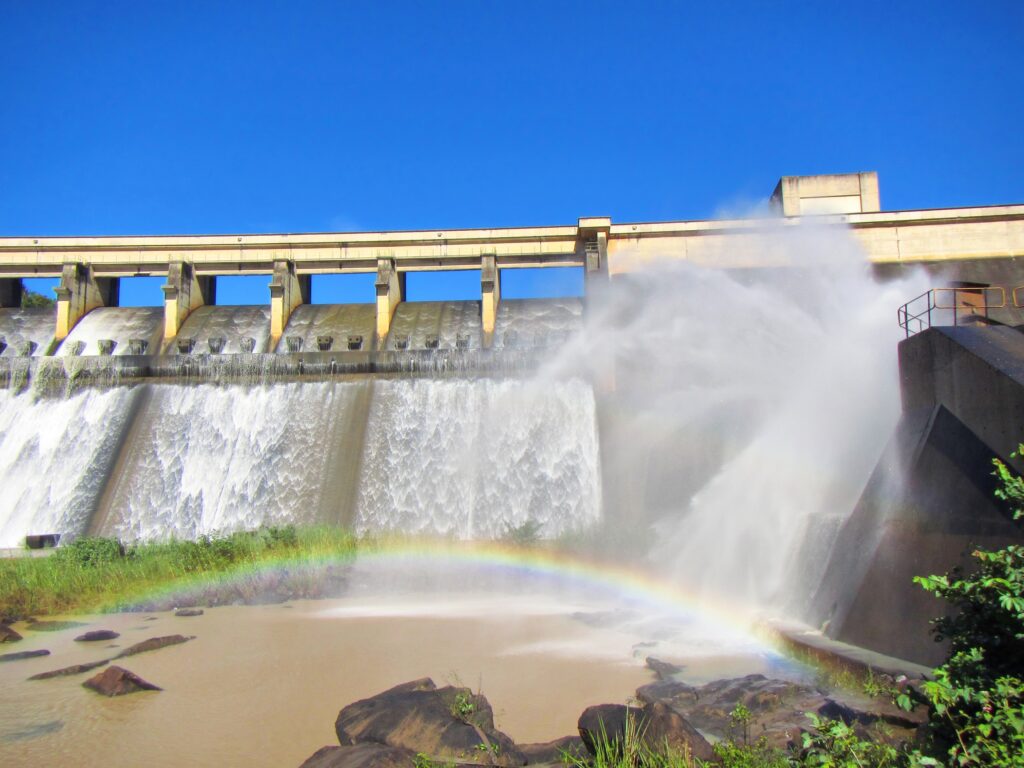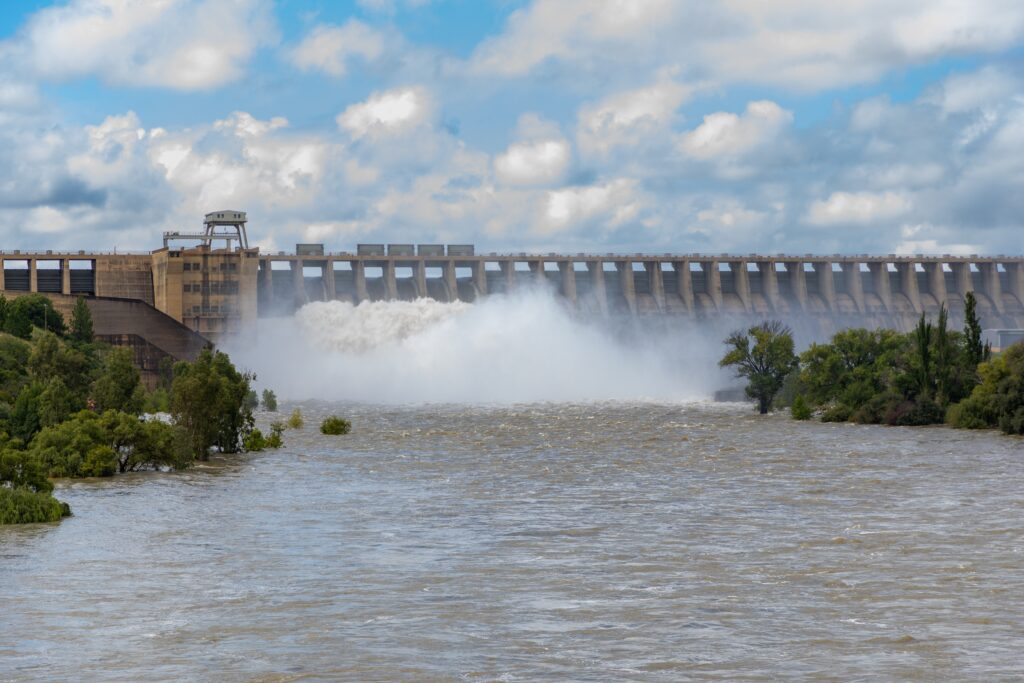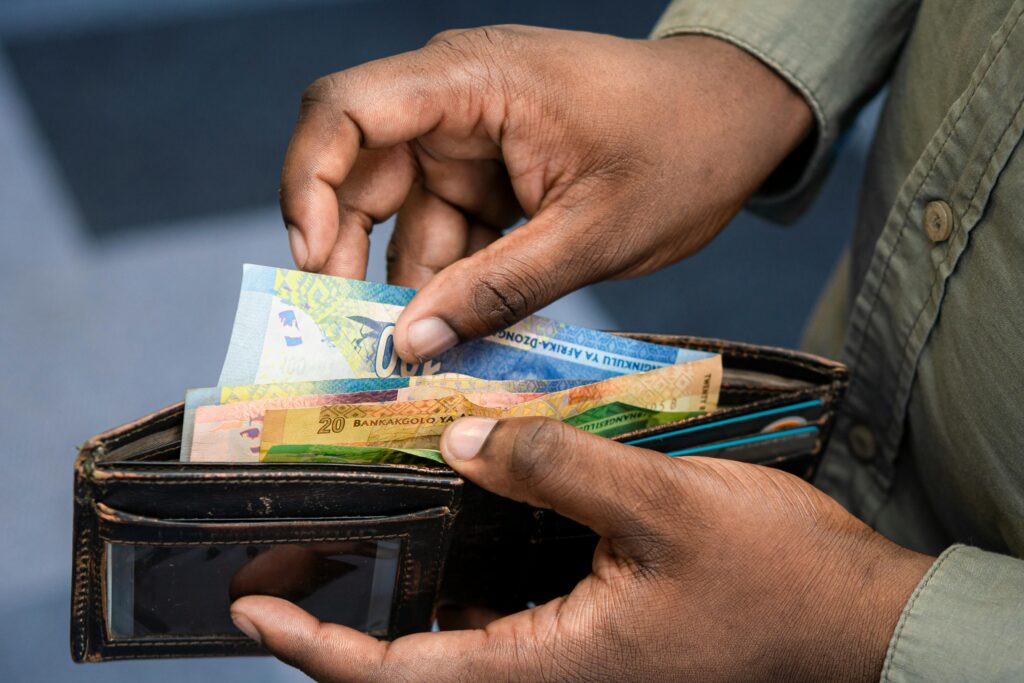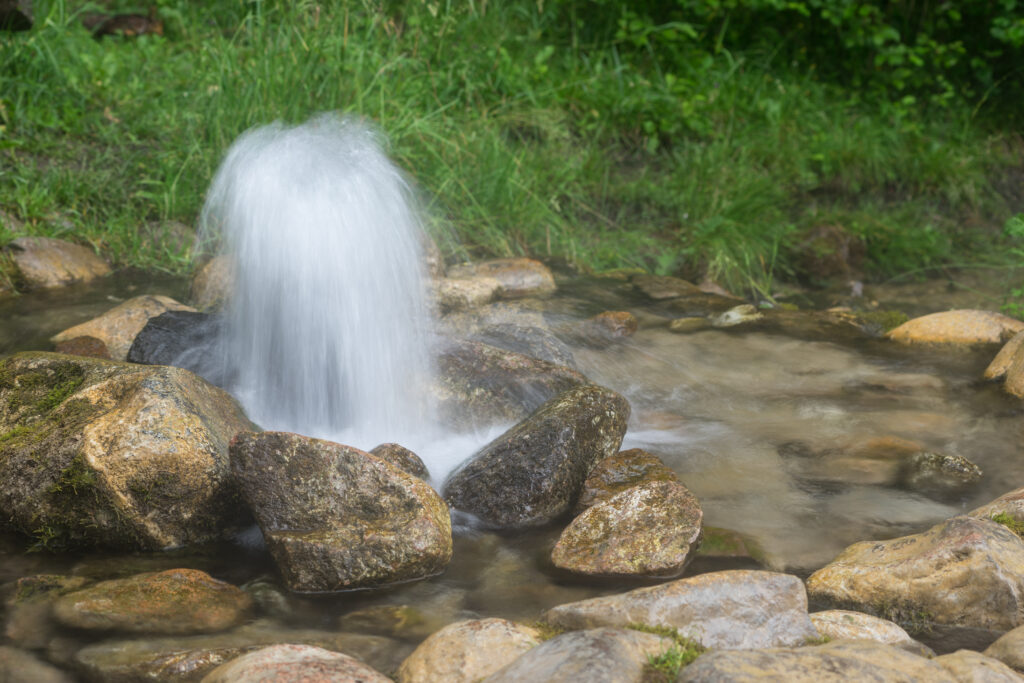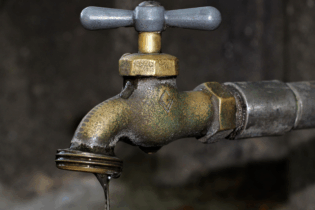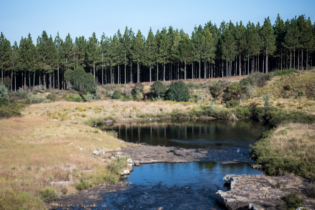Minister Pemmy Majodina prioritizes infrastructure investment, sustainable resource use, and effective water management. Building on her predecessor’s reforms, she aims to secure water as both a fundamental right and a catalyst for economic growth.
By Duncan Nortier The state of South Africa’s water is precarious, the minister notes that “we are one of the 30 most water-scarce countries in the world” a fact that weighs heavily on our population and economic growth as the country is notably ‘thirsty’ consuming 218 litres per capita per day, higher than the international average of 173 litres per capita per day. While our dams capture 75% of the total available surface water, collecting the remaining surface water is an expensive task. These issues are compacted by climate change which Minister Pemmy Majodina says manifests as, “more frequent and severe conditions such as the recent flooding in eThekwini” which “take a considerable toll on our infrastructure.”Continuity
The impact that the former Minister of Water and Sanitation Senzo Mchunu had on the sector is undeniable and Pemmy Majodina acknowledged this in her budget speech, she goes on to say “ I would like to make it clear that it is my intention to ensure that there is continuity of the various reforms and improvements that were initiated by my predecessor, Minister Mchunu, many of which were mandated by the National Development Plan and the Presidency’s Operation Vulindlela.” This aligns with the various political commentators who hoped for the ministry to continue and expand on what Senzo Mchunu had started. Carrying on the initiatives set out by the previous minister, and creating new ones in the same spirit will ensure a future for the sector, which Minister Pemmy calls “one of the most important sectors in South Africa, and water is one of the most important issues globally.”Water security
Water is a basic human right, yet it is dependent on infrastructure and investment. The minister explains that water must be delivered as the human right it is but it must also be seen as a valuable commodity that can aid in the economic growth of the country. “The availability of water must not become a constraint to investment and economic growth, and there must be sufficient water to meet the needs of our population as mandated by the Constitution.” This dualism is at the forefront of the plans espoused by the Department of Water and Sanitation (DWS). There are three focus areas:- Ensure that there is timeous investment in additional water resource infrastructure to capture the remaining 25% of our exploitable surface water resources.
- Diversify the water mix, and increasingly make use of other sources of water, including the sustainable use of groundwater, water reuse, and desalination.
- Implement more effective water conservation and demand management programmes to bring our water consumption per capita levels in line with, or below, the international average, and to ensure that industries use water as sparingly as possible.
Implementing national water resource infrastructure projects
There are several water resource infrastructure projects in various stages, some in the fund-raising and design phases, and others under construction. An example of a previous success by the department is the R865 million project to raise the wall of the Hazelmere Dam was completed in 2023 and has increased water supply to the eThekwini Metropolitan Municipality and surrounding areas in KwaZulu-Natal. These key infrastructure projects are being, what the department is calling, “accelerated”- The new R26 billion Upper uMkhomazi Dam and associated works are also earmarked to provide urgently needed additional water to eThekwini and surrounding districts including Ugu, Harry Gwala, iLembe and Mgungundlovu in KwaZulu-Natal.
- The new R1.8 billion Cwabeni off-channel storage dam will provide additional water to Port Shepstone and surrounding areas in KwaZulu-Natal.
- The new R800 million Stephen Dlamini Dam will provide sustainable water supplies to the town of Bulwer and surrounding peri-urban and rural communities in KwaZulu Natal.
- The R500 million project to raise the wall of the existing Klipfontein Dam will provide additional water for domestic use and irrigation in Northern KwaZulu-Natal.
- The new Polihali Dam under construction in the mountains of Lesotho, which is part of the R42 billion second phase of the Lesotho Highlands Water Project, will provide additional water to the Integrated Vaal River System which supplies Gauteng and parts of the Free State, Mpumalanga, North West, and Northern Cape provinces.
- The new R8 billion Ntabelanga Dam on a tributary of the uMzimvubu River will provide additional water for irrigation and domestic use in the eastern region of the Eastern Cape.
- Another water resource infrastructure project in the Eastern Cape is the new R2 billion Foxwood Dam to provide additional water for irrigation and for the town of Adelaide.
- The new R1 billion Zalu Dam will provide additional water for the town of Lusikisiki and surrounding villages, also in the Eastern Cape
- The new R600 million Coerney Balancing Dam will improve water security for the Nelson Mandela Bay Metropolitan area.
- The R4 billion new water transfer pipeline from the Crocodile West River to the Lephalale area of Limpopo will augment the water supply to the recently completed Medupi Power Station, Lephalale Town and the existing Matimba Power Station.
- The R750 million project to raise the wall of the existing Tzaneen Dam will address water shortages in Tzaneen and surrounding areas in Limpopo.
- The new R4 billion N’wamitwa Dam on the Great Letaba River will provide additional water for irrigation, and domestic and industrial use in the eastern part of Limpopo and increase flows into the Kruger National Park.
- The R7 billion project to raise the wall of the existing Clanwilliam Dam will double the size of the dam to provide additional water for irrigation, and domestic and industrial use to Clanwilliam and surrounding areas is also underway in the Western Cape.
- Also in the Western Cape, an R1.2 billion project is underway to abstract water from the Berg River and convey it to the existing Voëlvlei Dam, to increase the supply of water to the City of Cape Town and surrounding areas.
- R24 billion Olifants River Water Resource Development Project in Limpopo and the R10 billion Vaal Gamagara Phase Two Project in the Northern Cape. These two projects are being implemented in partnership with the mining sector, with joint funding by the government and the mines. Both projects will increase water supply and ensure water security to enable investment in mining. Communities adjacent to the bulk pipelines will also benefit from these projects.
Creating a National Water Resource Infrastructure Agency
The bulk of these projects are funded by raising money from the financial markets, banks, pension funds and development finance institutions. The Trans Caledon Tunnel Authority (TCTA) is responsible for raising most of the money for these projects and is based on explicit guarantees from the National Treasury, the problem here is that due to South Africa’s fiscal position, these guarantees are limited in value. This necessitates the development of the National Water Resource Infrastructure Agency, which will own all the national water resource infrastructure assets and obtain the revenue streams associated with those assets. This means the agency can borrow additional funds against the strength of its balance sheet. This move is made to ensure that water becomes a self-sufficient system in South Africa and one that can meet the challenges it faces in a more hands-on fashion. The National Water Resource Infrastructure Agency Bill was passed into parliament in May and is expected to be signed soon, this is a major development and involves moving all the assets owned by the department to the new agency including the staff responsible for operation and maintenance. The TCTA and the Water Trading Entity, which is responsible for collecting revenue from the sale of raw or untreated water to the Water Boards, municipalities and industry, will be absorbed by the new agency. This shift is a slow process and the transition period will likely end in May 2025 with the full establishment of the agency.Dam safety rehabilitation programme and rehabilitation of conveyance systems
The department owns 323 large dams. South Africa knows the pains of maintenance first-hand with Eskom’s struggles and as such DWS has committed to a robust and timeous maintenance strategy. Over the financial year, the department will oversee the implementation of the Dam Safety Rehabilitation Programme, which oversees the compliance of DWS-owned dams. The programme also oversees the rehabilitation of the water conveyance systems for irrigation and domestic use.
Revenue collection
Water, while being a human right, costs money. The principle of “pay for what you use” is more than an aphorism but an integral part of the economy – especially in relation to service delivery. Minister Pemmy puts it like this, “the survival and sustainability of the water sector is dependent on the user pays principle. The loans that we take out to finance our national water resource infrastructure projects have to be financed from revenue from the sale of water.” Revenue collection relies on the entire value chain, from the new top, the National Water Resource Infrastructure Agency which sells raw water to the various boards and industries, to water boards that sell treated water to municipalities, municipalities, who provide water to their constituents, and the domestic water users themselves. The principle is that whoever uses the water procured, be it raw or treated, should pay for it. The previous financial year saw R61.7 billion worth of water and sanitation-related grants to municipalities, who use these grants to address issues and challenges in their water service delivery. Outside of these grants, the entire system should be self-sufficient as the various municipalities receive revenue from the sale of water. The average cost of water per kilolitre on a domestic level is R44,97 per kilolitre (kl) for the first 200 kilolitres, after 200 kl water is charged at R47,00 per kl. While there is a preoccupation with domestic use, municipalities owe R21 billion to various water boards, an amount that threatens the stability of the entire sector. This debt has serious consequences such as the closure of the Sedibeng Water Board in 2022, which saw the board dissolve functions, assets and liabilities transferred to the Vaal Central and Magalies Water Boards. While a practical solution, this transfer did not solve the underlying issue of debt. To date, the Vaal Central and Magielies Water boards experience cash flow issues due to non-payment by municipalities. To combat this issue the Department and the various water boards have adopted strengthened and standardised their debt collection processes. The larger issue will see a collaboration between the Minister of Finance and the Minister of Cooperative Governance and Traditional Affairs, to find a sustainable long-term solution to this problem. Finance plays an important role in infrastructure and one of the biggest issues outside of debt is that municipalities do not or cannot invest in water and sanitation infrastructure. While there has been success in mobilising the private sector to invest in national projects, there has been a notable absence of private sector investment at a local and municipal level. The department has decided on a solution to directly tackle this issue, “the department has established the Water Partnerships Office, in collaboration with the Development Bank of Southern Africa (DBSA) and the South African Local Government Association (SALGA). The role of the Office is to provide support to municipalities to establish partnerships with the private sector.” In a practical example, the Water Partnerships Office is currently supporting the eThekwini, Mangaung, Buffalo City, Nelson Mandela Bay and Tshwane municipalities to help attract the private sector. This collaboration finances the replacement of leaking municipal water distribution pipes which result in high levels of non-revenue water. The private sector is pivotal in other projects like water reuse and desalination and mobilising the sector is instrumental in creating a stable water sector.Groundwater
DWS is implementing several measures to ensure the increased and sustainable use of groundwater. Generic standard operating procedures for municipalities have been developed, covering all aspects of groundwater management, including planning, exploration, drilling, borehole testing, monitoring, operation, and maintenance. Compliance with these procedures is included in the revised norms and standards for water services, now open for public consultation. The Department is also supporting municipalities by building capacity and providing data on groundwater aquifers with potential for sustainable exploitation. Additionally, the regulation of groundwater use is being strengthened through spot checks to ensure adherence to legal requirements and license conditions. The new regulations will require all groundwater users to register their boreholes and report abstraction volumes, and borehole drillers to provide the Department with information on all drilling activities.The medium-to-long-term expenditure framework
These challenges and the vision of the department for the water sector are subject to the following budget outlined by Minister Pemmy Majodina in her address in parliament. Total medium-to-long-term expenditure budget (MTEF): R134.909 billion Annual Allocations:- 2024/25: R42.604 billion
- 2025/26: R46.362 billion
- 2026/27: R45.941 billion
- Main Account:
- Total: R72.989 billion
- Annual Allocations:
- 2024/25: R24.074 billion
- 2025/26: R25.159 billion
- 2026/27: R23.754 billion
- Conditional Infrastructure Grants:
- Total: R36.305 billion
- Regional Bulk Infrastructure Grant: R20.130 billion
- Water Services Infrastructure Grant: R16.175 billion
- Water Trading Entity:
- Total: R61.920 billion
- Annual Allocations:
- 2024/25: R18.530 billion
- 2025/26: R21.202 billion
- 2026/27: R22.187 billion
- 2021/22: R2.5 billion (14.3% of the budget)
- 2022/23: R860 million (5% of the budget)
- 2023/24: R44 million (0.2% of the budget)
- Aim to eradicate under-expenditure and achieve 100% budget expenditure in the current financial year
- Enhance infrastructure procurement processes
- Better management of project allocations during the financial year





